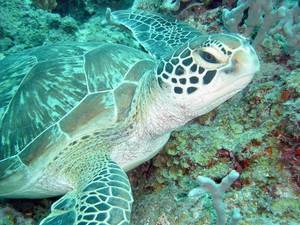Since 1981, the Serengeti national park has been one of the four Tanzanian natural sites which have had the honor of being classified as UNESCO World Heritage sites, with Ngorongoro, Selous and Kilimanjaro.
The Serengeti, the largest of Tanzania’s national parks with 14,763 km², can be divided into several regions with their particularities, the south (Kusini), in junction with the Ngorongoro conservation area, the center with the Seronera river, the The West with the western corridor which leads to Lake Victoria, the north with the Lobo region, whose Kenyan extension is the Masai Mara park. The Serengeti is traversed by the great wildebeest migration , over more than 1000 km. The migration involves more than a million wildebeest (and a large number of their zebra companions) in January, February in the south, and June-July in the north. Wildebeest columns can be more than 40 km long!
There are also rhinos (in the Moru Kopjes, still closed to tourism), jackals, hyenas, hippos, crocodiles, giraffes, elephants, almost every possible antelope and a rich avifauna where birds of prey, small and large , and the different species of vultures are well represented.
The Serengeti is one of the best places to see the three big predatory cats, lion, cheetah and leopard. And with a little luck their little cousin serval. And with great luck their little caracal cousin, a photo of which with no less than three specimens lying on the track has long adorned a wall of Ndutu Lodge! There would even be a few wild dogs left.
The wildlife of the Serengeti is rich in number and variety. Some figures gleaned here and there: 3000 lions, 1000 leopards, 500 cheetahs, 8000 hyenas. The wildebeest population, after a fall due to rinderpest at the beginning of the last century, has risen since the 1970s to more than a million heads, zebras number between 300 and 500,000 according to estimates, gazelles are also numbered in hundreds of thousands. Add to this more than 400 species of birds and you have a unique ecosystem in the world spread over 25,000 km² (i.e. the Serengeti plus Masai Mara plus a good part of the N.CA. and neighboring reserves).
The Serengeti is a plateau with an altitude of 1000 to 1500 m and more, a flat and grassy expanse , as its name in Masai indicates (Siringet = endless plain). The savannah is the queen, most often with a little shrubby savannah (“bush”) with acacias and rare expanses of wooded savannah. The rivers are bordered by “gallery forests”. The reliefs are essentially made up of large rock blocks, the kopjes, which should not be neglected because they often serve as a base for lions.



